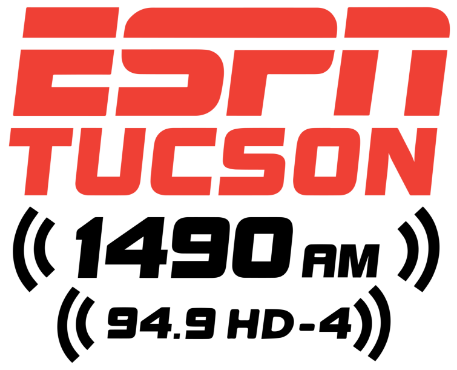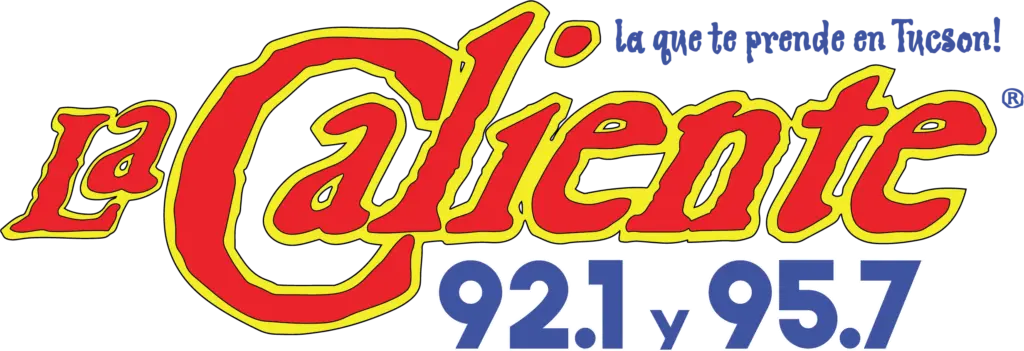The Hotline mailbag publishes weekly. Send questions to wilnerhotline@
Some questions have been edited for clarity and brevity.
If Washington State or Oregon State did what Michigan did, what would be the penalty? — @ShoelessSidd
In case you haven’t seen the news, the NCAA’s Committee on Infractions on Friday announced the sanctions against Michigan in the 2023 sign-stealing scandal.
The headline on the NCAA’s website: “Overwhelming evidence shows impermissible scouting scheme in Michigan football program”
The Wolverines were slapped with a massive fine — perhaps more than $30 million when everything is tallied — and coach Sherrone Moore will have a third game added to his pre-existing suspension. They also received four years probation and recruiting restrictions. Additionally, former coach Jim Harbaugh was hit with a 10-year show-cause order, while Connor Stalions, architect of the scheme, received an eight-year show-cause penalty.
But the Wolverines won’t vacate their 2023 national championship and, crucially, they avoided a postseason ban.
Our view: $30 million for a national championship is a trade Michigan would make every day of the week and twice on Saturday.
Same with Ohio State.
And Penn State.
And Georgia and Texas and Oregon and LSU and Oklahoma and Notre Dame and every other school dead set on winning championships.
But the question posed above is entirely reasonable and traces its roots to one of the greatest comments ever made about the NCAA enforcement process, courtesy of the late UNLV coach Jerry Tarkanian:
“The NCAA is so mad at Kentucky they’re going to give Cleveland State another year of probation.”
Would the NCAA have punished Washington State or Oregon State (or San Diego State or Coastal Carolina or North Texas) more severely for committing the same crime?
Our hunch? No, and here’s why: established precedent and the threat of legal action.
Two years ago, the NCAA ruled on what was arguably the worst cheating scandal in history: Under former coach Jeremy Pruitt, Tennessee committed more than 200 infractions, including 18 Level I violations.
The Volunteers were pounded by the Committee on Infractions — but with fines, vacated wins and recruiting restrictions, not with a postseason ban.
In fact, Kay Norton, the chief hearing officer for the committee at the time, addressed the absence of a postseason ban in her remarks on the ruling:
“Today’s decision preserves the opportunity for student-athletes who were not in the wrongdoing to participate at the highest level and in the post-season.”
It took far too long, but the NCAA finally realized postseason bans only punish innocent athletes (presuming the coach responsible is long gone from the university).
If the committee declined to hit Tennessee, it couldn’t turn around and whack Michigan with a playoff/bowl ban.
Nor could it have justified smacking Washington State or Oregon State in the hypothetical scenario posed above. The school could very well have responded with a lawsuit. (The threat of legal action was undoubtedly a consideration when crafting Michigan’s sanctions.)
It’s worth noting that in August 2023, one month after the NCAA ruled on Tennessee, Arizona State president Michael Crow and then-athletic director Ray Anderson announced a self-imposed, one-year postseason ban. Should the Sun Devils have taken their chances with the infractions committee? (It’s a question we pondered at the time.)
The Tennessee and Michigan punishments also underscore the gross miscarriage of justice administered by the NCAA in its sanctions of USC for the Reggie Bush violations.
The Bush-related transgressions were minor compared to those in the Tennessee case. But the punishment, which crippled the Trojans for years, was exponentially more severe.
Question about the theorized super league that would have 32 or 36 of the best teams, all used to winning at a high level. If you are only playing amongst yourselves, there are bound to be teams with losing or .500 records. Could two or three games be played against teams outside the league? — Niall A
There are numerous obstacles on the road to a college football super league forming in the next five or six years, with media contracts chief among them: The SEC’s all-in deal with ESPN runs into 2034. Would the network be willing to void the final years of the deal? Unlikely.
The competitive issue looms large, as well. You’re correct about blue-blood programs being hesitant to relegate themselves to mediocrity within a zero-sum environment.
Texas has a massive relative advantage within the Football Bowl Subdivision — even within the Power Four and the SEC. But in a 30-something team super league, that advantage is greatly reduced. The same goes for Georgia and Ohio State and several other current kingpins.
The schedules could be structured in a manner that allowed for matchups with teams outside the super league, but that would undercut the league’s purpose and, we presume, reduce the value of the media rights contract.
We see minimal difference between the SEC as it currently exists and a super league in which one-third or one-quarter of the games are not intra-league matchups.
In order to convince the Longhorns, for example, that a super league would be worth the competitive risk — that they should tolerate possible mediocrity — the financial rewards would have to be massive.
But even that might not be enough. At a certain point, dollars cannot replace victories.
I noted your mailbag response last week to a question regarding Cal and Stanford: “Yes, there is regret — deep regret — that the Pac-12 did not hold together, but neither university is second-guessing its decision to join the ACC.” But how would they proceed if the ACC implodes? — Michael F
We aren’t convinced the ACC will implode, but it’s hardly an unreasonable scenario given the settlement terms of the lawsuits brought against the conference by Clemson and Florida State.
The money owed by departing schools through the grant-of-rights contract drops to a manageable level ($75 million) starting in 2030, so many industry observers view that as a likely rupture point.
Add the expiring media rights contracts in the 2030-32 window for the Big Ten, Big 12, NCAA Tournament and College Football Playoff, and it sure seems the Doomsday Clock is ticking.
The Tigers and Seminoles aren’t the only flight risks. North Carolina and Miami would undoubtedly seek refuge in the Big Ten or SEC, and don’t discount Georgia Tech as a possible target for the Big Ten.
In other words, the ACC could be gutted, to the point the conference is no longer viable.
Cal and Stanford assuredly would set their sights on the Big Ten — a move that makes loads of sense competitively by creating a six-team western arm that would greatly reduce travel demands on athletes.
Lacking a Big Ten offer, the Bay Area schools could attempt to join the ACC holdovers in reforming the conference or merging with the Big 12 and/or Big East (for basketball).
Or they could return to a conference based on the West Coast.
We have no idea how it will all unfold, but it’s clear that realignment, in some form or fashion, is more likely than the status quo.
On your recent podcast, you mentioned the Big Ten’s proposed format for the College Football Playoff has merit. Can you elaborate on that? — @MistUncle
The Hotline’s official position is that both proposed models have merit, but the Big Ten did a poor job selling its model to the public.
The AQ format, which allocates 13 spots for automatic qualifiers and only three for at-large teams, greatly reduces the impact of non-conference losses. In theory, that means teams would be more willing to schedule marquee intersectional games, especially in September.
But critics of the 4-4-2-2-1 plan, with Big 12 commissioner Brett Yormark leading the charge, believe predetermined CFP bids would undercut the legitimacy of the regular season.
If the CFP moves to the 5+11 model, with 11 spots assigned to at-large teams, the selection committee would have exponentially greater influence on the process. Losses in non-conference games could have dire consequences for access.
As a result, the Big Ten might be wary of the high-level games that make the early season so compelling. In fact, Ohio State coach Ryan Day said exactly that at Big Ten media days last month in Las Vegas.
The impasse is classic college football: The best way to create compelling early-season games is to make them irrelevant to the CFP selection process.
Could a playoff format arranged in a 3-3-2-2-1-5 structure be considered a viable compromise between the competing proposals? In my view, it would maintain Big Ten and SEC primacy while allowing a reasonable number of at-large bids. — Veronica S
Your plan reduces the number of automatic bids for the SEC and Big Ten, from four (each) to three, and increases the number of at-large sports from three to five.
In other words, bids guaranteed for the two behemoths would be made available to the masses.
It’s a completely reasonable approach, unless you’re the Big Ten and SEC. They would assuredly view the plan as limiting their access and, for that reason, seemingly would be unlikely to approve.
If there’s a compromise available, it’s the so-called 4-4-2.5-2.5-1 model, in which the third-place teams in the Big 12 and ACC square off on championship weekend with a CFP bid available for the winner.
Why is Boise State throwing a temper tantrum about Grand Canyon joining the Mountain West in 2025-26, one year early? What’s the big deal about adjusting schedules for cross country, volleyball and soccer? — @NateJones2009
To a great extent, Boise State’s response is about legal posturing. The Broncos (and Utah State and Colorado State) are contesting actions by the MW on several fronts. Any chance to add fuel to the evidentiary fire is one the attorneys cannot, and should not, ignore.
On a more practical level, it’s about travel costs: Adding Grand Canyon to the competitive calendar this year requires schedule changes that will impact Boise State’s budget.
Fans of the Mountain West and Pac-12 should attempt to ignore the legal machinations — a court filing here, a statement there — at least until the parties settle or head to trial.
The next important date is September 9, when the presiding judge will hear the MW’s motion to dismiss the poaching penalty lawsuit filed by the Pac-12.
Most legal experts contacted by the Hotline in recent months believe the motion to dismiss will be denied, sending the case to trial and increasing the likelihood of a negotiated settlement.
Is Luke Moga on your radar yet? — @BarrioGladstone
For those unfamiliar, Luke Moga is a redshirt freshman quarterback for Oregon. And he’s on the Hotline radar to the same extent as any other second or third stringer. Which is to say: We’re monitoring at a low level.
Dante Moore will take every meaningful snap for the Ducks barring injury or poor play, and there’s nothing to indicate the latter will be an issue. Moore has a stellar arm and should be well-versed in the playbook after spending last season as Dillon Gabriel’s understudy.
If a replacement is needed this fall, the Ducks could turn to Moga, although sophomore Austin Novosad seems a better bet given his edge in experience. The fourth option? True freshman Akili Smith Jr.
With the recent budget cuts announced at Stanford, will the athletic department have enough support and alignment from the broader university community to thrive in modern college football? — @sfw4422
On the surface, there is reason for optimism for suffering Stanford fans.
The new president, Jonathan Levin, cares about football and recognizes the value it brings to the school.
Provost Jenny Martinez is vastly more accepting of athletics than her predecessor, Persis Drell, who might have done more to undermine football than anyone else on campus.
General manager Andrew Luck knows what is required to succeed and, presumably, would not have taken the job if Levin had given anti-football vibes.
And don’t forget that Stanford has more resources and a wealthier alumni base than the vast majority of schools in major college football.
For the Cardinal, success in the ACC is entirely about willpower.
It’s about maxing out on revenue sharing, generating NIL dollars, accepting elite transfers from the SEC and Big Ten, and establishing a fair and manageable admissions bar for high school recruits.
Also, it’s about making the necessary commitments in the face of resistance from both the faculty and proponents of Olympic sports who want football to be treated as one of 36 programs.
That colossally misguided approach over the past decade is part of the reason — a huge part of the reason — for the current mess.
Football was nationally prominent from 2009-15, thanks to an unprecedented commitment to succeed by the administration.
Did that devastate the Olympic sports? Nope.
Did it ruin Stanford’s academic reputation? Nope.
We’ll see if the Cardinal has learned from past mistakes, and successes.
How’s Nick Rolovich fitting in as Cal’s senior offensive assistant? — @Kemosahbeh
Very well, from what we hear.
Rolovich is a sharp offensive mind and relates well to the players. The issues at Washington State were rooted in his refusal to take the COVID vaccine as mandated by the university, not his coaching acumen.
As we see it, the issue in Berkeley isn’t Rolovich’s role. It’s the degree to which offensive coordinator Bryan Harsin will make a positive impact.
The Bears need more production, and they need it consistently. Can Harsin deliver? And how heavily will he lean on Rolovich for preparation and in-game strategy?
Coach Justin Wilcox’s job security could hang in the balance.
How did you get an AP Top 25 vote? — @DBradley1964
You aren’t the first person to ask … or the 1,000th. This question surfaces every August with the release of the preseason poll.
It might surprise you to learn that I have been an AP voter for decades. Yep, they keep asking me back. And not just for football. I have participated in the men’s basketball poll for years, as well.
Why is that? Why would one of the most respected news-gathering organizations in the world continue to invite someone they know produces an outlier ballot with regularity?
Two reasons, from what I have gleaned: 1) The AP poll braintrust knows I take the responsibility very seriously, pay close attention to the games/results and am accountable for the weekly ballot; and 2) the AP doesn’t like groupthink.
I cannot emphasize that second piece enough.
Fans view outlier ballots as a sign of ignorance or stupidity; the AP does not. It wants diverse perspectives from the 65 voters.
When will last week’s mailbag publish? — @jimmy0726
It was published, as usual, on Friday of last week. The primary topic: Which coordinators from Pac-12 legacy schools are on the Hot Seat this fall?
Soon after publication, I went off the grid for a 48-hour trip to Lake Tahoe — it was my last weekend off until the spring — and the article link was not made available on X. That’s on me, for sure.
But please note: The best way to stay updated on Hotline content is through the website itself. Every published article appears on wilnerhotline.com and on the tag pages for the Big Ten, Big 12, ACC and Pac-12.
With the season ramping up, we plan to produce daily content for the next four months. Occasionally, the links might not be available on social media. The website will have everything.
Thanks for the question and your support.
*** Send suggestions, comments and tips (confidentiality guaranteed) to wilnerhotline@
*** Follow me on the social media platform X: @WilnerHotline
The post Mailbag: Why Michigan dodged the postseason ban, super league flaw, CFP formats, ACC stability, MW legal matters and more first appeared on Sports360AZ.











